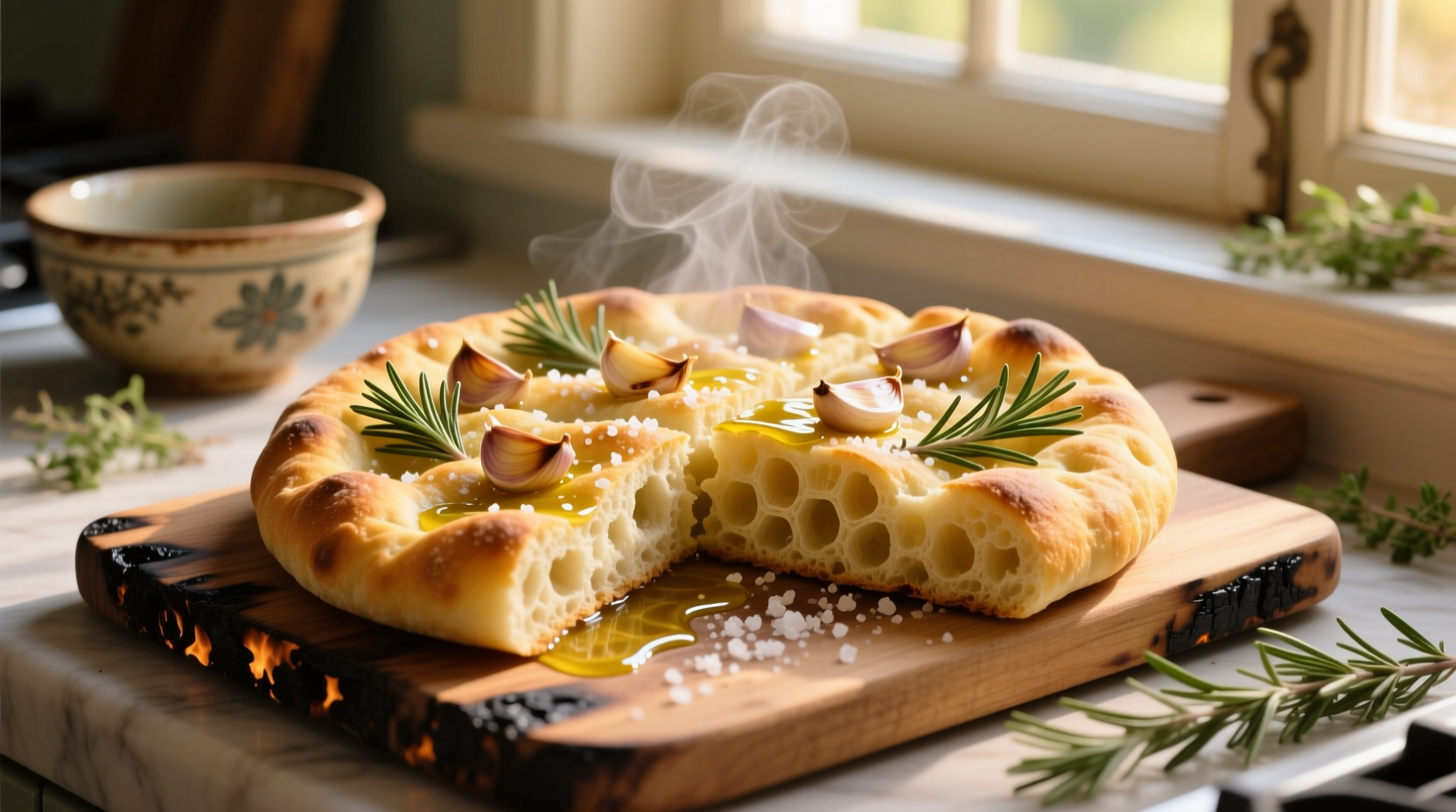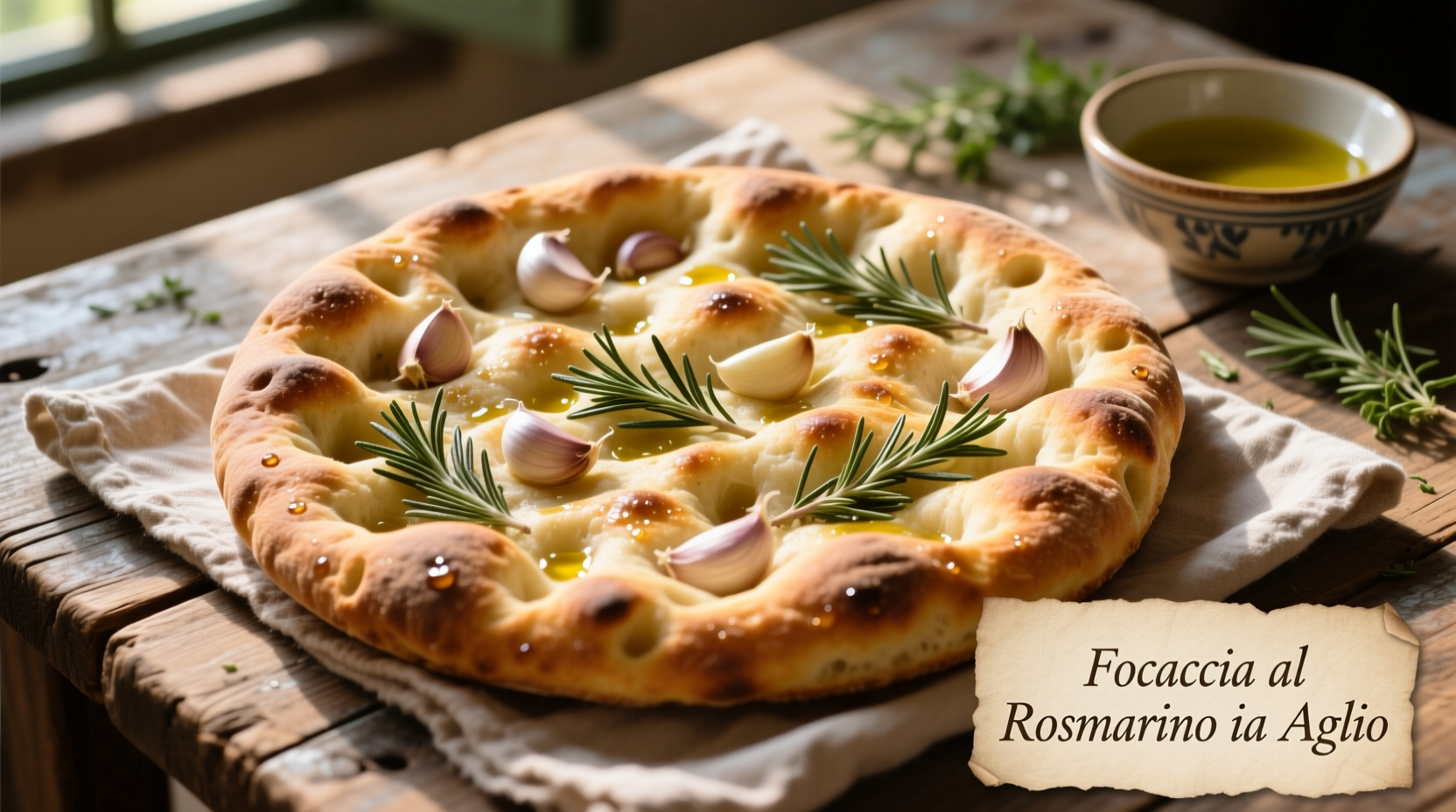Here's the essential recipe for perfect focaccia with garlic and rosemary: Combine 500g bread flour, 375ml lukewarm water, 7g active dry yeast, 10g fine sea salt, and 15ml honey. After first rise, dimple dough, then top with 60ml extra virgin olive oil, 4 minced garlic cloves, 30g fresh rosemary, flaky sea salt, and black pepper. Bake at 220°C (425°F) for 20-25 minutes until golden brown.
Nothing compares to the aroma of freshly baked focaccia with garlic and rosemary filling your kitchen. This Italian flatbread, with its crisp exterior and cloud-like interior, has been perfected over centuries of Mediterranean baking tradition. Whether you're a beginner baker or seasoned kitchen enthusiast, this guide delivers everything you need to create authentic, restaurant-quality focaccia at home.
The Secret Behind Perfect Focaccia Texture
Professional bakers achieve that signature airy crumb through precise hydration control. Traditional Italian focaccia maintains a 75% hydration level - meaning 75g of water per 100g of flour. This higher moisture content creates steam during baking, resulting in those beautiful irregular holes throughout the bread. Unlike standard bread recipes, focaccia's wetter dough requires careful handling but delivers superior texture.
| Hydration Level | Texture Result | Best For |
|---|---|---|
| 60-65% | Dense, tight crumb | Sandwich breads |
| 70-75% | Open, irregular holes | Authentic focaccia |
| 80%+ | Extremely wet, challenging to handle | Artisan sourdough |
Your Step-by-Step Focaccia Journey
Preparation Phase (15 minutes)
Start with quality ingredients - bread flour's higher protein content creates better structure than all-purpose flour. Combine flour, yeast, and honey in a stand mixer bowl. Gradually add lukewarm water (not hot, which kills yeast) while mixing with dough hook. After 5 minutes of mixing, add salt and continue until dough forms a sticky mass that pulls away from the bowl sides.
Fermentation Process (3-4 hours)
Transfer dough to an oiled bowl, cover with plastic, and let rise at room temperature for 1.5 hours. Perform stretch-and-folds every 30 minutes - gently pull one side of the dough upward and fold toward the center. This develops gluten without traditional kneading. After final fold, refrigerate overnight for complex flavor development, or proceed immediately for same-day baking.
Shaping and Second Rise (2 hours)
Pour 30ml olive oil into a 9x13 inch baking pan. Gently transfer dough, pressing to fill corners. Using oiled fingers, create deep dimples across the surface - these pockets will hold the garlic and rosemary. Cover and let rise until doubled in size. Properly proofed focaccia should spring back slowly when gently pressed.
Baking to Perfection
Preheat oven to 220°C (425°F) with convection setting if available. Just before baking, drizzle remaining olive oil over dimples, then add minced garlic, rosemary, and coarse salt. Bake for 20-25 minutes until golden brown and internal temperature reaches 93°C (200°F). The bottom should sound hollow when tapped. Transfer to wire rack immediately to prevent sogginess.

Avoid These Common Focaccia Mistakes
Many home bakers struggle with dense focaccia because they skip the dimpling step or use insufficient oil. The dimples aren't just decorative - they create channels for oil absorption and prevent the dough from rising too much in the oven. Using regular table salt instead of flaky sea salt results in uneven seasoning. And crucially, never skip the resting period after baking - cutting too soon releases trapped steam, ruining the texture.
Cultural Significance of Rosemary in Italian Baking
Rosemary's use in Italian bread dates back to Roman times, when it symbolized remembrance and fidelity. In Liguria, where focaccia originated, rosemary represents the region's rugged coastal hills. Traditional bakers harvest rosemary in the morning when essential oils are most concentrated, creating that distinctive pine-like aroma. Modern food historians note that rosemary's antimicrobial properties helped preserve bread before refrigeration, making it both practical and flavorful.
Serving and Storage Tips
Serve focaccia warm for optimal texture - the contrast between crisp exterior and soft interior disappears as it cools completely. Pair with ripe tomatoes and fresh mozzarella for a classic Caprese-inspired snack. For storage, wrap cooled focaccia in a clean kitchen towel, then place in paper bag. Avoid plastic containers which trap moisture and accelerate staling. Properly stored, focaccia maintains quality for 2-3 days. To refresh, mist with water and reheat at 180°C (350°F) for 5-7 minutes.
Perfect Pairings for Your Focaccia
This versatile bread complements many dishes. Try it alongside minestrone soup, as a base for bruschetta toppings, or sliced and toasted for panini sandwiches. For breakfast, serve with soft-scrambled eggs and sautéed mushrooms. The garlic and rosemary flavors particularly enhance Mediterranean dishes like grilled fish or roasted vegetables. Many Italian families enjoy focaccia as an afternoon snack with a glass of chilled white wine.











 浙公网安备
33010002000092号
浙公网安备
33010002000092号 浙B2-20120091-4
浙B2-20120091-4